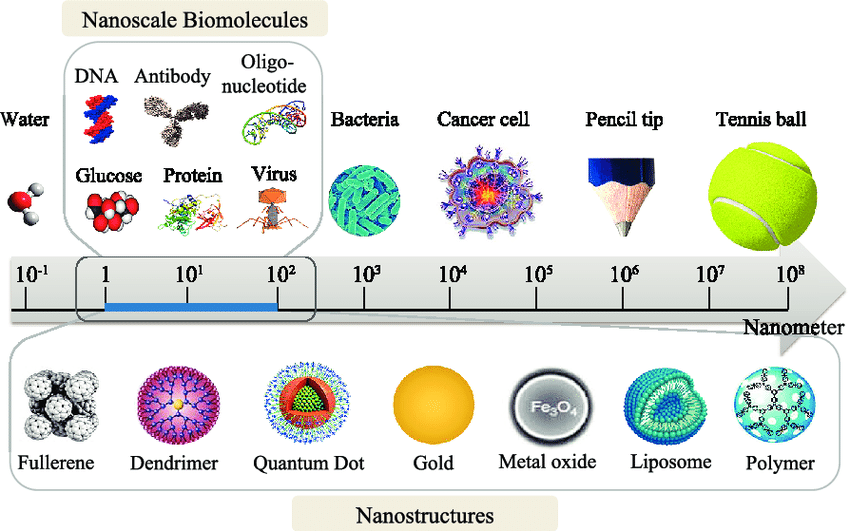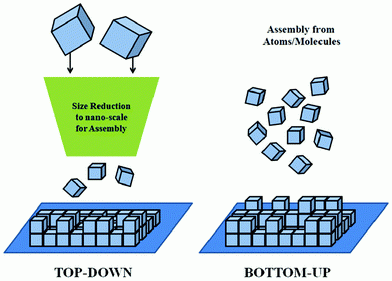Tiny nanoparticles have been able to lead the way in inverting the world. If you want to get an idea of the amazing things a nanoparticle can do, take your mind into nanostructure, then you can find a thousand things you can do with these tiny particles. Today, hundreds of thousands of researchers in various fields around the world are conducting research based on nanotechnology. The concept of nanotechnology is commonly attributed to the American physicist and the famous Nobel Laureate, Dr. Richard P. Feynman, who gave the lecture “There’s Plenty of Room at the Bottom” at a meeting of the American Physical Society on December 29, 1959. In his lectures, Feynman talked about;
- How is it possible to write and read in atoms?
- Storage of information on a small scale
- Miniaturizing the computer
- Extravagant biological systems
- Better electron microscopes
- Miniaturization by evaporation
- Solving the problems of lubrication
- Building tiny objects with atoms
Almost all the ideas presented in Feynman’s lecture are undergoing vigorous research today, and his smart imaginations have been realized with improvements in nanotechnology. The best pieces of evidence are the invention of the scanning tunneling microscope (STM), the Atomic force microscope (AFM), the scanning probe microscope, and denser computer circuitry. These inventions contributed to the development of nanotechnology.
Nanotechnology has become an interesting science in recent days, with amazing nanoproducts widely circulating and being consumed. The world of science is upgrading in smarter ways, with most of the innovation being made possible by the application of nanotechnology. The term “nano” evolved from the Greek word “nanos,” meaning “dwarf.” It is used as a prefix to denote one billionth in a measuring system. 1 nm is 1 billionth of a meter. “Nanoscale,” is a scale covering 1–100 nm. Nano is the understanding and control of matter at dimensions of roughly 1 to 100 nanometers. The simplest definition of nanotechnology is any technology operating on the nanoscale and has real-world applications for creating functional structures using single atoms and molecules. Nanotechnology is connected with systems and materials, which have significantly improved the chemical, physical, and biological properties, processes, and phenomena of systems and materials because of their nanoscale size.
In nanotechnology, numerous approaches have been used successfully and new approaches will be introduced with the development of nanotechnology. There are two general approaches to the synthesis of nanomaterials. They are the top-down approach and the bottom-up approach. The top-down approach is based on the assembly of structures by manipulating components of much larger devices via monolithic processing. The electronics industry is the most successful industry at using the top-down approach.
The bottom-up approach is the opposite of the top-down approach. The bottom-up approach involves arranging atoms or molecules into nanostructures, which involves the manufacture of devices structures at the molecular level. This approach is used in natural biosystems to repair organ systems, tissues, and cells.
The properties of nanomaterials may be quite different from those of bulk materials because the dimensions of a material are reduced below 100 nm. Therefore, nanostructured materials may show new properties, especially these additional changes linked with the size and structure properties of nanoparticles’ increased performance compared to bulk materials when they are used for similar applications. Nano-catalysts are a new class of catalysts that are a significant application of nanoparticles. Nanoparticle size, structure, and composition improved the performance of chemical reactions as catalysts. The large surface-to-volume ratio, surface morphology, and electronic properties of nanoparticles provide them with advantages as catalysts.
Nanoscience studies are related to the following key properties of matter and systems
- Have at least one dimension less than 10 nm.
- Use methodologies that present fundamental control of the physical and chemical characteristics of molecular-scale structures/processes.
- They allow the production of larger structures through their building block properties.
Also, there are many special reasons why the nanoscale has become very important and why this field has created new opportunities in science and technology. The high ratio of surface-area-to-volume that exists in most nanoscale components provides possible new quantum mechanical effects because of the change of electronic properties with the quantum size effect. Nanoscale materials are feasible to alter their microscopic and macroscopic properties such as melting temperatures, magnetization, and charge capacity without changing their chemical composition. The nanoscale materials are ideal for catalysts, drug delivery, reacting systems, composite materials, and energy storage because of their large surface-to-volume ratio and interfacial and surface chemistry.
Nanostructures can improve the mechanical properties of macroscopic systems which are made up of nanostructures. As examples, the improved strength and hardness of nanomaterials and light-weight nanocomposites, improved compression properties, and improved malleability. A key feature of molecular structures or biological entities in the body is their systematic organization at the nanoscale. This allows us to put man-made nanoscale objects into living cells for research and development in nanotechnology and to investigate the microstructure and macrostructure of matter using molecular self-assembly. These properties of nanomaterials are used in numerous applications in various fields of science and technology.
References :
- Nasrollahzadeh, M.; Sajadi, S. M.; Sajjadi, M.; Issaabadi, Z. An Introduction to Nanotechnology; 2019; pp 1–27. https://doi.org/10.1016/B978-0-12-813586-0.00001-8
- Godale, C.; Sharon, M. Contemporary History of Nanotechnology. In History of Nanotechnology; John Wiley & Sons, Inc.: Hoboken, NJ, USA, 2019; pp 213–269. https://doi.org/10.1002/9781119460534.ch8
Image Courtesy:
- Featured image: https://bit.ly/3yKzoIC
- Figure 1: https://bit.ly/3ABjpwU
- Figure2: https://bit.ly/3AK1Bjr
- Figure 3: https://bit.ly/3CH1gj8
- Figure 4: https://bit.ly/3yIIDc5





